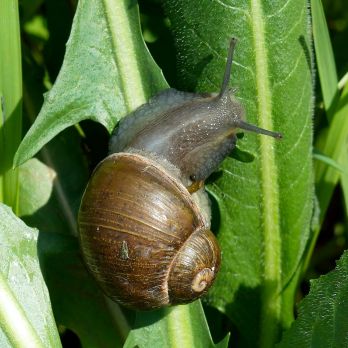Green snail
The green snail (Cornu apertus – Born, 1778) is also known as Cantareus apertus, formerly Helix aperta.
These snails are proficient hitchhikers and move between regions on farm machinery and vehicles that carry infested host materials.
Background
Green snail is native to Southern Europe and North Africa.
It has been established in the Perth metropolitan area since the 1980s. In September 2011, green snail was detected near Cobram in the north of Victoria.
Importing green snail host materials into South Australia is restricted from all of Western Australia and Cobram. The SA Plant Quarantine Standard defines green snail host material as:
- soil, plants and plant material (including cuttings and bare rooted plants but not bare-rooted trees, provided they have no leaves and fruit)
- leafy vegetables, peas, beans, asparagus, strawberries and strawberry plants
- cut flowers
- turf
- hay, straw and other baled fodder.
‘Topped’ rooted vegetables cleaned of soil are not considered hosts.
Impacts
The green snail has caused damage to cabbages, cauliflowers, lettuces, peas, beans, wheat, lupins, pasture grasses and native plants. This is similar to the common garden snail, which:
- feeds on surfaces of young leaves
- only penetrates shallowly and leaves a ‘windowpane effect’.
Older snails eat holes in the leaves and may reduce them to veins only.
Green snails do not pose a risk to crops during summer. The main concern is spreading via its likely carriers or hosts.
Identification
Mature green snails have an olive-green shell and white flesh.
They are intermediate in size, between the smaller vineyard snail and white Italian snail, and the larger common garden snail. Green snail rarely exceeds 25 mm in shell diameter.
This species remains dormant through the summer in dry situations. Unlike the other snails, they burrow into the soil before becoming dormant. Following autumn and winter rains, the snail reactivates itself.
Mature green snails lay eggs in the soil and the young snails appear in early winter. They can breed quickly, with up to 1000 young snails found per square metre.


